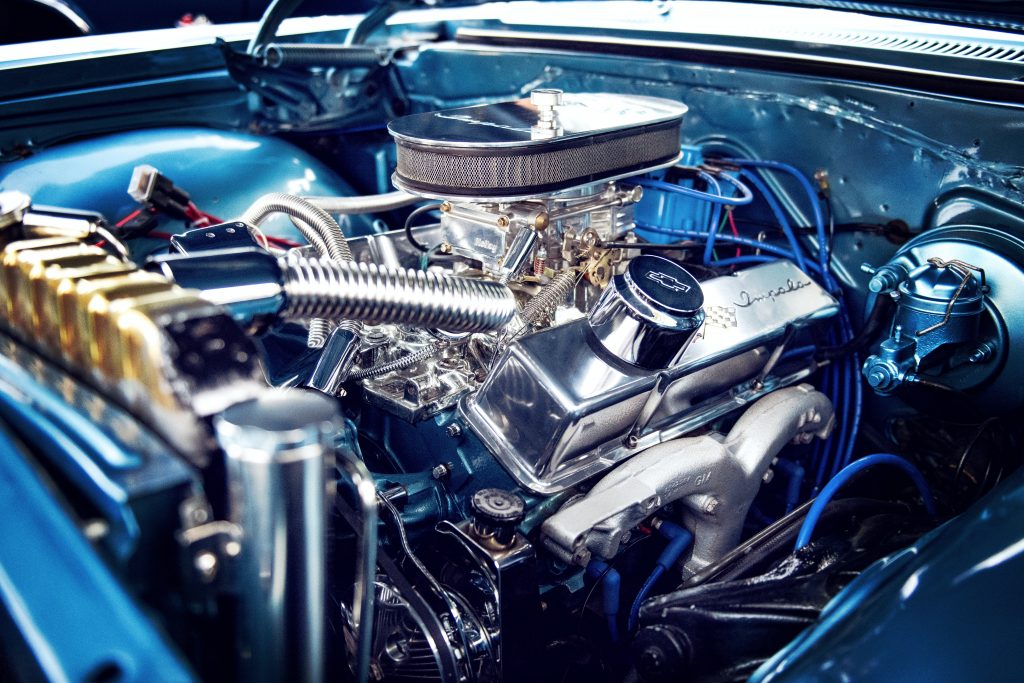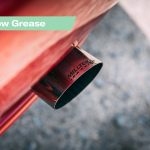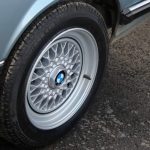Richard Tipper has been valeting cars of all shapes and sizes since 1989, and can spend up to a week detailing every inch of a car. He has gone through more cleaning accessories and products than you’ll find on the shelves of an automotive superstore. These are Tipper’s Tips for the Hagerty community.
The only thing I’ve not really covered yet in terms of actually detailing your car is the engine, and it’s one for me that’s always a little bit of a concern, because there’s all sorts of sensitive bits and pieces under a bonnet. I do think it’s a critical area to cover though, and one of the detailing tasks I’m most asked about.

There are definitely good reasons for cleaning a car’s engine and engine bay. It allows you to see leakages, especially oil, and you can better see the condition of belts and other moving parts. I always get positive feedback from technicians who work on cars I’ve cleaned – they tell me it’s a pleasure to work on engines where they aren’t getting covered in engine oil and grime! It’s a good sign the owner has some mechanical sympathy too, as the old saying goes, if you’re prepared to look after an engine, you’ve probably looked after the rest of the car too.
Steam or chemicals?
In terms of cost, choosing whether to steam clean or use cold water and chemicals is much of a muchness. Steam cleaning – as opposed to using a pressure washer – uses hot water to break down any oil and grease – cold water on its own tends to emulsify and push any grime around rather than breaking it apart and pushing it off the surface.
Chemicals tend to be solvent based and are designed to break down oils, and most cold water cleaning will use some kind of chemical. The solvents come in many different forms, such as tar and glue removers, but even products like WD40 and GT85 tested and rated here – people think of them as lubricants, but they’re also great as cleaners and dressings, as they’re very good at breaking down grease. Products like Gunk work well too, and then there are all manner of products you can get from detailing suppliers.
Things to watch out for
Steam works well, but you do have to be careful. You want to avoid blasting grease out of areas that need it, such as bearings or other moving parts that need lubrication.
Then you have electrical parts, which applies to almost all ages of engine. It’s good practice to cover these areas up with say, a latex glove, a freezer bag or even cling film and tie it up with elastic bands. Seal up distributor caps, coil packs, fuse boxes, things like that. Even batteries – they may be designed to be weatherproof, but you don’t want to leave any water standing in the battery tray.
Next, where’s your car’s engine? In the front, middle, or rear? With some mid-engined cars you can’t get to the engine without removing numerous panels – the Porsche Cayman, for example. Ferraris and Lamborghinis often make it a lot easier as ostensibly the engine is put on display. Interestingly, because they’re often vented for heat removal, they tend to be exposed to the elements more, and as a result, they also have well-concealed electronics – making them safer to clean with water.
With rear-engined cars like the Porsche 911, areas like the spark plugs tend to be well protected as they’re on the side of the engine and often exposed to road grime, but coil packs can be an issue – they may have cracks that you don’t notice until you hit the unit with water. It’s happened to me before, and of course I’ve immediately rectified the issue with no questions asked.
Older engines often have the plugs at the bottom of conveniently-shaped lugs that basically act as water pockets. If you’ve got something like a classic Jaguar, it’s well worth cleaning from the bottom of the engine up, and perhaps avoid the top altogether.
Then there are air intakes. Needless to say, drawing water into an engine can be bad news, so you want to avoid these areas if possible. It tends to be quite obvious where the intake inlet is on older cars, while on newer models there’s usually an area around the grille and fairly high up to avoid ingesting water from puddles.
It’s also worth watching out for cars with alarm sirens. Later models tend to point towards the ground, but an upward-facing siren on an older car is more of a risk – there’s a good chance that if you blast it with water, it won’t work post-cleaning! It’s another area you’re better off covering up with a bag.
Drying, coating and protection

Then, once you’ve cleaned an engine, it’s worth drying it out thoroughly. I use high-pressure air to blow water out of all the crooks and crevices it might be sat in. Once the engine is clean and dry, I then tend to run it, get everything up to temperature, and make sure it’s all working properly and there are no dash lights that shouldn’t be on.
Sometimes I’ll also wait for the cooling fans to cut in – they’ll often blow any water out of the radiators that might still be in there. This is particularly relevant if you’re cleaning an engine on a car that’s then going to sit in a garage for a while – it’s not good practice to let water sit around in those areas for a long time.
There are some areas of an engine that are beneficial to coat and protect, much as you would when cleaning other areas of a car. Products like ACF-50 and XCP can be used to protect exposed metals from corrosion, especially those you may have exposed through cleaning. Waxoil also works well on some surfaces. And a very light mist of a water displacement product can be used to prevent fan belts squealing after you’ve just cleaned an engine bay – but not too much!
Summing up
While you should be concerned that getting certain areas wet can create issues, it shouldn’t put you off cleaning your car’s engine altogether, because the chance of causing problems is still very low. Just take sensible precautions, protect vulnerable areas, and use the right techniques.
If you’re using chemicals, use the dilution ratio recommended on the product, because the manufacturer knows best. And wear gloves to protect your skin.
And finally, remember to protect the paintwork around the engine, on the wings for example, by draping something over them to further protect the paint from your movements and whatever products you might be using.
Also read
Elbow Grease: Preparing your car for a concours event
Elbow Grease: Some clarity on cleaning glass
Elbow Grease: Brushing new life into Alcantara









